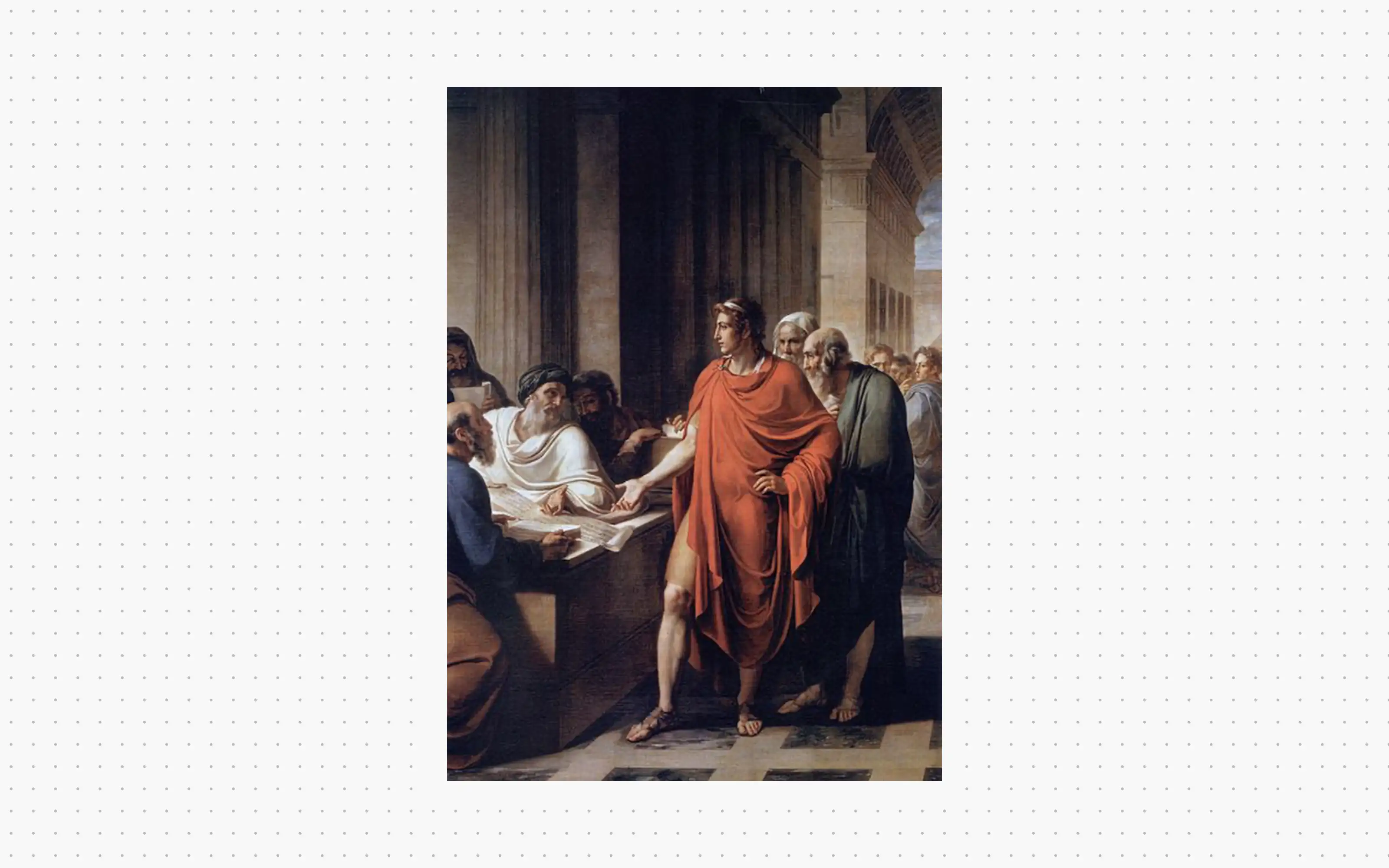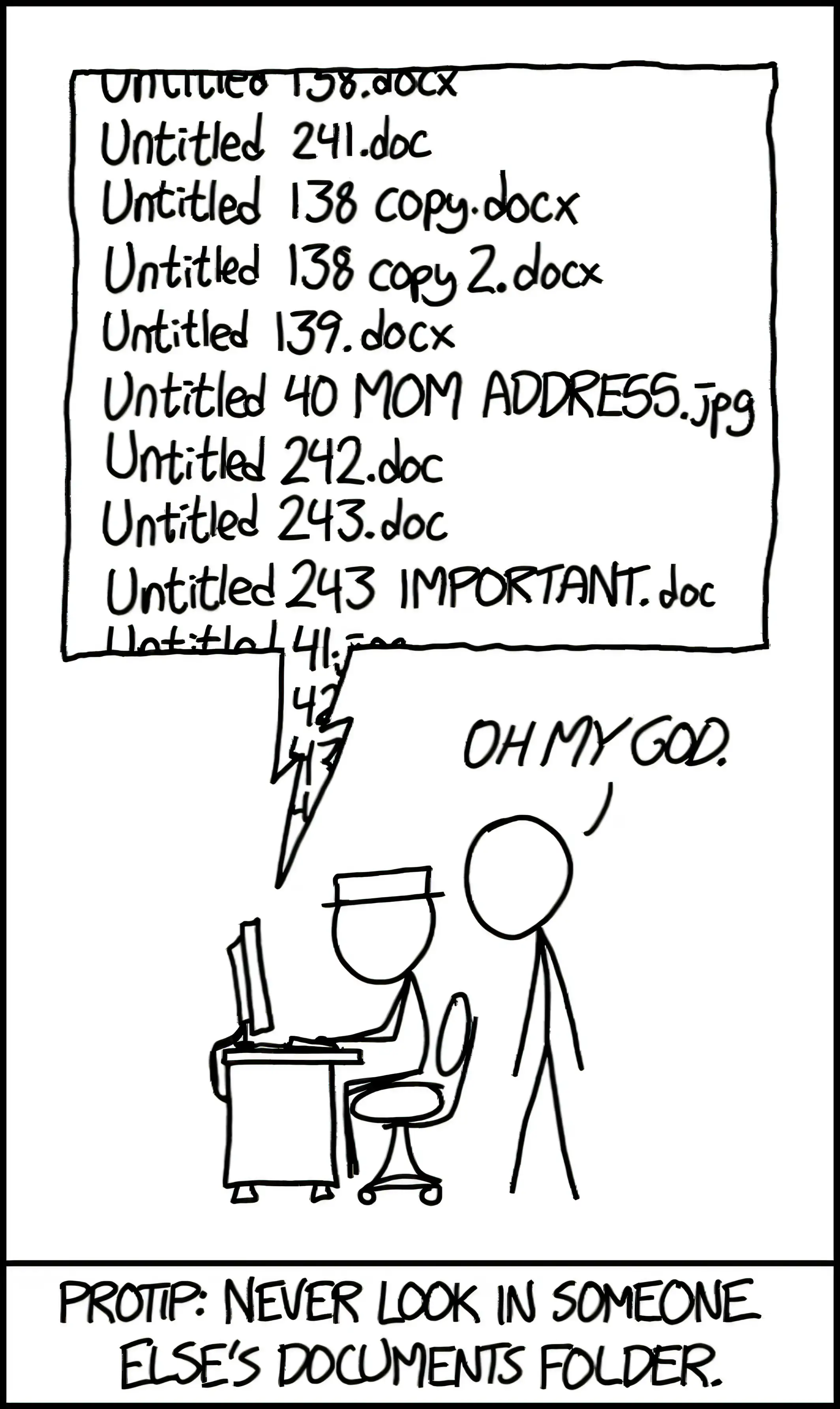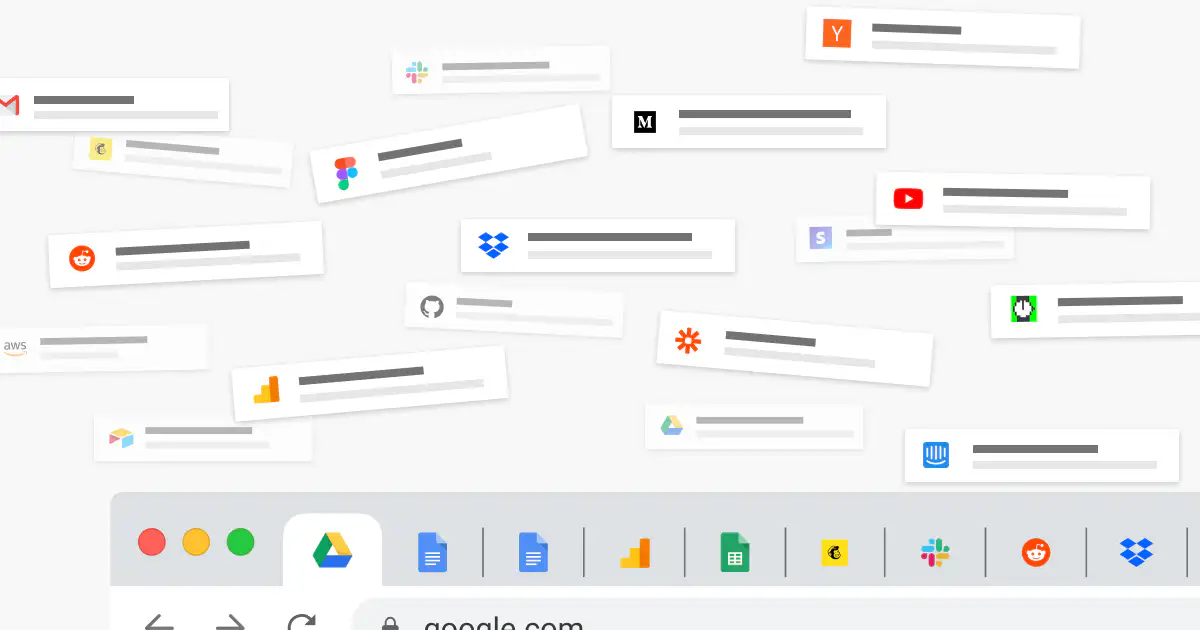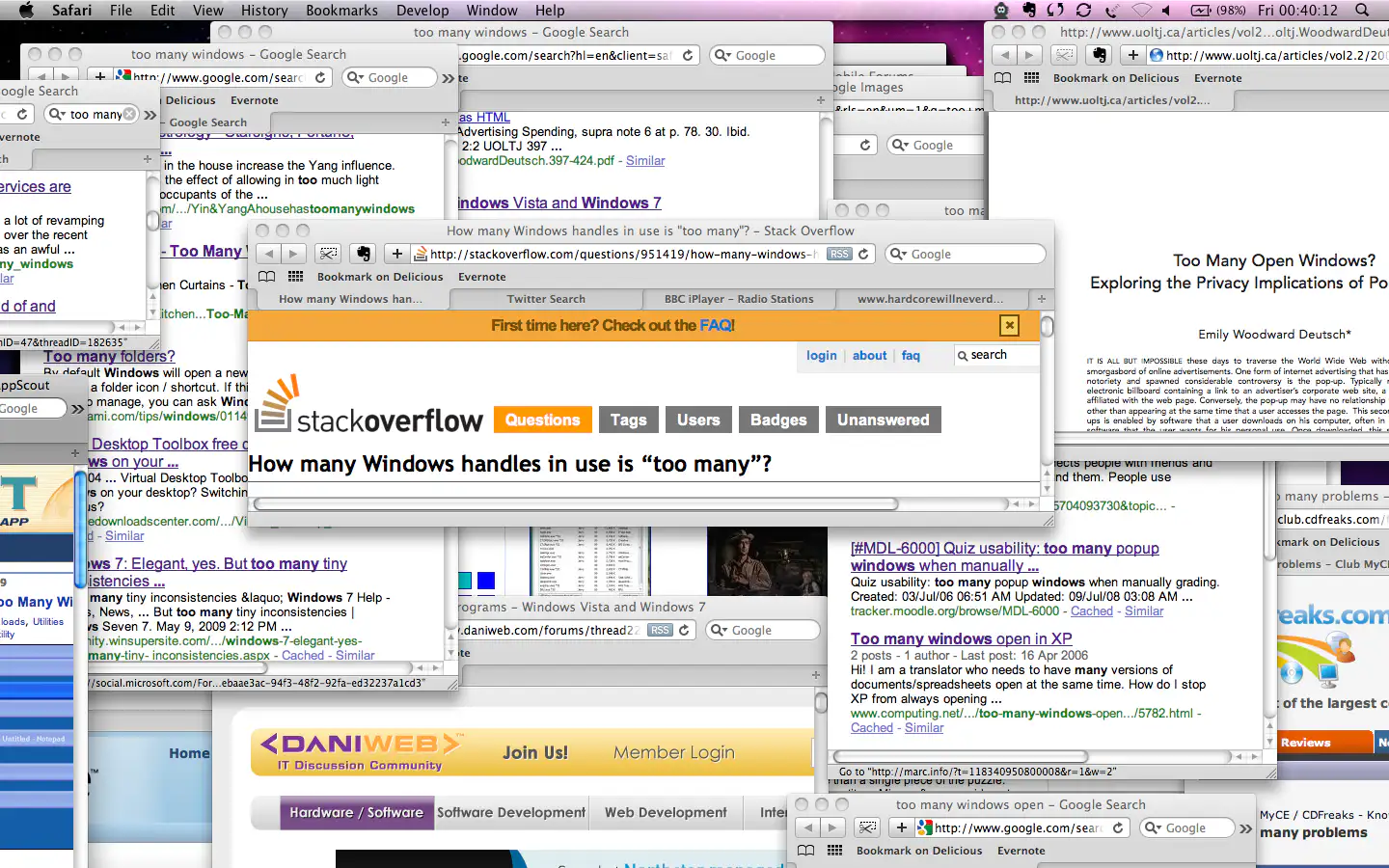Modern collaboration tools promised to make knowledge work easier and teams more productive, but they’ve done the opposite. By fragmenting context across apps like Slack, Notion, and Asana, they’ve turned productivity into archaeology, endless searching for what we already knew. This essay explores why every generation, from the Library of Alexandria to today’s digital workplace, mistakes information storage for real collaboration, and why the future of work depends not on more tools, but on systems that preserve meaning, continuity, and flow. It’s written for anyone trying to understand why modern teams feel overwhelmed, how context fragments across tools, and what a better future of knowledge work requires.
Why Modern Collaboration Tools Are Failing Knowledge Work in 2025
Every generation thinks it’s the first to drown in information overload.
Two thousand years ago, the Library of Alexandria was humanity’s first attempt to store everything it knew, the internet of its time. It held nearly all human knowledge: astronomy from Babylon, medicine from Egypt, philosophy from Greece, mathematics from India.

Ships entering its port had their scrolls seized, copied, and returned; the originals stayed on its shelves. More than a library, it was a promise:
We'll never forget again.
How Information Overload Emerged Long Before the Digital Workplace
Alexandria never built a system for preservation, retrieval or knowledge management. There was no universal catalogue, no consistent system to find what you needed. It was an infinite ocean of wisdom with no map. When the fires came, whether from war, accident, or neglect, they only finished what disorganization had already started.
The world lost knowledge long before the flames, buried under its own abundance.
That’s how most progress begins and ends: not with ignorance, but with knowing too much, too fast, all at once. And that’s how it repeats itself, storage mistaken for memory, and memory mistaken for understanding. We collect more than we can comprehend. We create systems and tools to remember, only to discover new ways to forget.
The tragedy of Alexandria wasn’t fire; it was the belief that storage equals understanding. We solved scarcity so well that abundance became the new bottleneck, the first productivity paradox.
Modern teams face the same overload. We use dozens of productivity tools including Slack, Notion, Asana, Google Docs, Jira and more. These tools were designed to simplify collaboration, yet they often multiply complexity because they scatter meaning across many surfaces.

Modern collaboration tools fail because they scatter context across too many places. Chats, tasks, documents and files store fragments of meaning that never reconnect. Teams do not lose information. They lose the understanding that connects it.
How Knowledge Gets Lost Across Generations and Systems
After Alexandria fell, knowledge hid behind walls instead of shelves.
For centuries, Europe’s knowledge lived behind monastery gates. The monks who copied books by hand preserved civilization, and accidentally privatized it. Each manuscript was precious, protected, and practically unreachable. If you wanted access, you had to travel, plead, or join the order. They replaced chaos with custody and called it progress.

Knowledge was safe now, but frozen.
Five hundred years later, Gutenberg’s press freed it again. The press didn’t create new knowledge; it democratized it. The press proved that access, not ownership, drives progress.

Knowledge work and fragmentation
Knowledge work refers to work in which the primary output is ideas, decisions, analysis, planning, strategy, or problem-solving rather than physical labor. Designers, engineers, product managers, marketers, analysts, founders, and operators are all knowledge workers.
Knowledge fragmentation happens when information related to a single workflow or decision is scattered across multiple tools such as Slack, Notion, Drive, email, Asana, and shared folders. The information still exists, but the context that connects it is lost, which makes retrieval harder and slows decision-making.
The Long History of Gatekeeping in Knowledge Work
Every leap in human history begins with one realization: knowledge expands faster than our ability to access it.
Yet the instinct to protect, catalogue, and control never disappeared; it only found new containers. The monks’ walls became folders and passwords of today. Their illuminated scrolls became versioned documents and shared drives.
Every era redefines how humans collaborate, from scrolls to spreadsheets to Slack. Each promised clarity. Each ended in tool overload. We once lost knowledge to fire. Now we lose it to folders.
The intention to preserve was noble. The outcome, familiar. We mistook preservation for progress once, and we’ve been repeating that mistake ever since.

What the Data Says About Modern Knowledge Work
1. Workers lose nearly one full day each week searching for information. 2. Knowledge workers switch apps more than one thousand times per day. 3. Almost half of all digital transformation projects fail due to context loss, not tooling.
Alexandria Reborn
The modern office is Alexandria rebuilt, not in stone, but in software. It’s a perfect archive of things we’ll never see again, a civilization of files that remembers everything except what matters.
Why Modern Collaboration Tools Fail at Context and Continuity
Today, we don’t have scrolls. We have folders, drives, apps, and inboxes. Each meeting, every note, every half-formed thought is preserved somewhere, perhaps called “final-v7-latest”. Information is immortal now, but memory still dies young.
Work isn’t execution anymore. It’s recovery.
Most of this recovery comes from switching between tools such as Slack for conversations, Notion for documentation, Asana for tasks, Sheets for numbers and Drive for files. This constant context switching is one of the biggest hidden drains on productivity.

We don’t lose information because we forget to write it down, but because we wrote it everywhere. A message here, a note there, a draft somewhere else, immortal yet scattered.
Everyone thinks their job is to get work done. But most of work today is just remembering what we were supposed to do, finding where we last did it, and explaining what changed since, a problem that only sharpens in remote teams, where context dissolves faster.
“Where’s that presentation?”
“Is this the final version or yesterday’s?”
“Who documented the client feedback?”
Different teams. Same questions. We don’t start meetings anymore; we reconstruct them.
A Zoom survey found that nearly two-thirds of knowledge workers say alignment takes longer than execution. The rest spend their time trying to align about alignment. Gartner estimates nearly 20% of every week is spent searching for information. That’s like losing one day in five to archaeology.
The Growing Cost of Reconstructing Decisions
Every company has this archaeologist, someone who carries the memory others forget, the human antidote to meeting overload and scattered tools. A product manager, an ops lead, the founder herself. They’re the ones people Slack at 11 p.m. asking, “Do you have the link?” They know which doc is real, which decision stuck, and who said what last week.
They don’t complain, just stay late, even after “office hours” cross-check the links, rewrite the updates, and hold the system together by memory. And yet, without them, every Monday feels like the first day of a new company.
No one gave them the title, but everyone depends on them. They are, in spirit, the Chief Collaboration Officer, the human patch for the holes our productivity tools keep creating.
When humans become the system, the system has already failed.
Every company is searching for a center of gravity, even if subconsciously, a single source of truth, a living system that remembers what everyone forgets. But truth doesn’t live in software; it lives in continuity.
We built an industry of software for collaboration, and somewhere along the way, collaboration became the work itself.
For centuries, we’ve built external minds to hold what our real ones couldn’t. Every era gave birth to its own second brain: the library, the ledger, the cloud. Today it’s Notion, Drive, Slack, or whatever folder mirrors our thoughts in digital form.
But the problem isn’t that our second brains are empty; they remember everything except what matters.
We built external memory faster than we built internal meaning. The result is an illusion of intelligence, a world where information accumulates but understanding doesn’t compound.
The original brain evolved to connect ideas, not to store them. The second brain was supposed to extend that, not replace it. We built a second brain to remember more, and ended up needing one just to remember where the first one put things.
The tragedy of Alexandria repeats itself: we keep building systems to remember, and forget what they were built for.

A single source of truth is a unified system where information, decisions, context, and updates stay connected in one place. A true SSOT reduces duplication and removes the need to reconstruct meaning across tools.
The Paradox of Progress
Every invention begins the same way: this will make life easier.
For a while, it does. A task gets faster, a burden lighter, a mess organized. Then, almost invisibly, the friction migrates. It hides in a new corner of the system, waiting to be rediscovered later.
Progress rarely deletes problems; it just moves them out of sight.
Work once lived in one place: a desk, a meeting, a single sheet of paper that held both thought and record. You could see everything you were responsible for, the whole picture. Then technology promised to unbundle that picture into cleaner parts, each tool efficient on its own and disjointed in combination.

We didn’t escape complexity; we just made it easier to manage and harder to see. And once complexity became invisible, we mistook that for control.
The Real Problem With Collaboration Tools: Fragmentation, Not Functionality
The heartbeat of work keeps shifting hosts, from Dropbox to Slack to Notion, each trying to become the company’s central nervous system, the place where knowledge lives and flows. But none have held it for long. Every few years, a new contender rises, claiming to own collaboration, and every time, the same story ends: we get more tools, not more truth.

Email was the first digital revolution in collaboration. It was supposed to centralize communication, and it did, but it also drowned us in replies, CCs, and threads that never ended.
Then came the cloud. Dropbox tried to become the new center of gravity by owning the files, a single vault for everything we made. But it only stored the work, not the context around it.
Slack arrived next, promising to connect what Dropbox contained. For a moment, it seemed like Slack had won; the new operating system for work. Slack became the chatroom of record, not the brain. The real work, the context, the decision-making, the flow, still escaped it.
And so, layer by layer, we kept stacking new fixes, believing more asynchronous communication would restore clarity.
It’s the same logic that once promised we’d save time with email, then spent decades teaching us how to reach inbox zero.

Context switching is the mental cost of shifting attention between tasks, tools, or work surfaces. Research shows it can reduce effective productivity by up to 40 percent because the brain treats each switch as a new task.
The Cognitive Cost of Endless Context Switching
The average worker uses nine to eleven tools every day and switches between them more than a thousand times. That’s not just lost time; it’s a mental reset button pressed over and over.

The human brain can only hold a few pieces of context at once. Every switch clears the slate a little, and the more we switch, the more we start over. That’s more than a thousand tiny context deaths a day, each one so small you don’t notice it, until you realize you’ve worked twelve hours and can’t remember what you actually finished.
Context switching has become the invisible tax of the digital workplace, the silent cost of using too many productivity tools, quietly fueling cognitive overload.
We call it productivity. It’s really amnesia with better branding.
By noon, your browser has fifteen tabs open. By evening, your mind feels the same.

Tool fragmentation occurs when teams use too many disconnected apps for communication, documentation, project management, and file storage. Each tool solves one problem, but together they create information silos, repeated work, and unclear ownership.
The Cost of Context
There are really two kinds of tools now, each shaping our workflow in ways we barely notice:
- Creation tools, where the work itself happens: Figma for designers, VS Code for engineers, Sheets for analysts, Ableton for musicians, Premiere for editors. Places where ideas are still crafted by hand, even if the hand is digital.
- And coordination tools, where that work gets shared, approved, discussed, and reinterpreted: Slack, Asana, Notion, ClickUp, Jira, Teams. The meeting rooms of the modern world, always full, never still.
Why Coordination Tools Multiply Faster Than Clarity
We built better tools for creating, and endless tools for communicating, each adding a thin layer of process fragmentation we barely notice. The average knowledge worker doesn’t feel more productive than their parents. They feel more anxious about falling behind. We separated productivity from collaboration, forgetting they were once the same act, synthesis and coordination as one motion.
The Paradox of Choice plays out here perfectly. More options feel like freedom, until you have to choose. Each new system doesn’t just add a login; it adds a layer of doubt.
We don’t multiply tools not from love of complexity, but because control feels safer than clarity. Each new app is a small insurance policy against chaos, until it becomes the chaos.
The tools that promised control now demand constant participation. Work doesn’t end anymore. It just changes platforms.
None of this is new.

Factories in the 1900s divided labor to go faster, creating silos. Corporations in the 1950s divided departments to manage scale, birthing bureaucracy. Today’s digital tools are just higher-resolution versions of the same idea, dividing thinking, planning, and execution until attention itself needs supervision.
Every era has its own Tower of Babel, the ancients built theirs from stone; we build ours from software. Both were attempts to reach higher by stacking what should have stayed simple.
There’s a name for every inefficiency except this one. Engineering has technical debt. Design has design debt. But every company now carries something just as corrosive: collaboration debt, the hidden cost of keeping context alive between apps.
Collaboration debt increases every time someone retypes what was already written, every time a Slack message becomes a task or a comment becomes a meeting, the workflow fragmentation grows. The interest is paid in lost context, fragmented, rewritten, and reshaped until no one’s sure which version is true.
Gartner estimates nearly half of all digital transformation projects fail, not because the tools break, but because context does. Technology connects tasks. Humans connect understanding.

Collaboration debt is the accumulated cost of re-explaining decisions, reconstructing context, maintaining alignment, and reconnecting scattered information across tools. It grows each time context is lost and must be recreated manually.
The Illusion of Integration in Modern Collaboration Systems
APIs were supposed to save us. If only everything could talk to everything else, work would finally flow, or so we thought. But APIs connect data, not meaning. They can move a sentence, not its intent. They can sync fields, not context.
We built a global line of communication, but no shared field of understanding.
That’s why every integration dashboard looks perfect from above: arrows, graphs, motion. But motion isn’t progress; it’s movement that looks organized.
A company can automate everything except comprehension.
A startup I once visited had every integration you could imagine. Notion updated Slack. Slack updated Jira. Jira notified Notion again, just to prove it worked. Yet every Friday, they still met for two hours to “get on the same page.” They weren’t aligning data; they were aligning memory and meaning.
The Return of the River
Progress rarely moves forward in straight lines. It loops, solving one problem by creating another, then circling back decades later to rediscover what it missed.
That’s where we are now.
We’ve built the best tools in history to manage work, and somehow made working harder. This is why many teams feel stuck, even while using the best tools money can buy
Humanity keeps inventing new ways to remember and, in doing so, discovers new ways to forget.
Because when progress circles back, it’s usually not to build better tools, but to remember better truths. We stand at that crossroads again, three futures, all shaped by the same instinct: to make sense of the noise we created in the digital workplace.
1. The First Path: Adding More Tools (The Illusion of Control)
The easiest way to fix a broken system is to add another system. And for twenty years, that’s exactly what we’ve done.
Every need got its own pond. Notes had one. Chats had another. Tasks got their own. Files, feedback, strategy, all carefully placed in separate containers, each with its own rules, permissions, and logins. Each pond was calm, contained, and beautiful in isolation. Together, they became a floodplain of confusion.
You could see your work perfectly within each surface, but never the whole landscape. Meaning began evaporating between them.
Every new tool promised clarity, and in effect, created another island. We don’t have a scarcity of systems anymore. We have an abundance of information silos, small, self-contained, and still.
We mistook containment for control, the same way the monks once mistook preservation for progress. Their manuscripts survived, but meaning stayed locked behind walls. Our ponds do the same, only now the gates have logins instead of locks.
2. The Second Path: Meta Layers and Integrations (Borrowed Flow)
When the ponds stopped communicating, we built bridges. Integrations, APIs, automations, all meant to make water move again.
It looked perfect from above: lines connecting everything, data traveling in neat channels, dashboards lighting up like cities at night. Zapier, Rewind, Sky, webs of automation remembering what we did so we wouldn’t have to.
They’re brilliant at collecting data, terrible at preserving meaning. They know what happened, never why.
Bridges don’t make flow; they borrow it. They need constant energy to keep water moving, and even then, what travels is surface-level. Information moves, but meaning doesn’t.
It’s the irrigation age of work: engineered, maintained, impressive, and endlessly dependent on upkeep. We spend as much time tending the system as using it. Like automating déjà vu, you can replay the scene, but not the feeling.
These bridges gave us the illusion of connection, not the experience of coherence. They kept the ponds alive, but they never restored the river. They missed flow, the connective tissue of real knowledge work.
We built bridges to move water when what we needed was rain.
3. The Third Path: Rebuilding the Ecosystem (Real Continuity)
The third path asks us to stop stacking tools and start rebuilding foundations. Not more platforms, but fewer walls.
Before there were apps or dashboards, there was flow, a single current carrying thought, decision, and action in one motion. Notes weren’t separate from conversations. Conversations weren’t separate from execution. Everything belonged to the same stream.
Nature doesn’t keep meaning in containers; it circulates.
A real ecosystem doesn’t just move water; it transforms.
Rain becomes rivers. Rivers become seas. Seas become clouds again. Nothing is lost, only transformed.
That’s what continuity looks like: context moving naturally between forms, ideas becoming actions, actions becoming knowledge, knowledge becoming the next idea.
We think we’re building ecosystems with apps and integrations. But most are just irrigation systems with prettier dashboards.
True ecosystems regenerate meaning. They remember not just what happened, but why.
Because meaning, like water, is cyclical, not linear.
You can’t fix a dry river by building more dams. You fix it by letting the water flow again. Most of us are still busy building dams.
The future of work won’t be faster or louder. It’ll be cyclical, continuous, and alive.

Teams that work smoothly share one principle. Information, context, and decisions must live in one connected flow rather than scattered surfaces. This is what people mean when they talk about a single source of truth. It is the foundation that modern teams are missing.
The Real Collaboration
Every era promises connection but ends in fragmentation, and the modern digital workplace is no exception.
But every few centuries, humanity remembers what it was really trying to do.
It was never just trying to store information.
It was trying to share understanding.

Understanding is not a file to be uploaded or a thread to be synced. It’s something that passes mind to mind, memory to memory, with context intact. And context, unlike data, doesn’t scale; it circulates.
That’s why every age builds its own Alexandria, a system meant to preserve what people once understood, and every age eventually burns it down. Not out of ignorance, but because the meaning that once animated it, has already escaped.
When systems stop flowing, humans start patching. When memory stops moving, culture starts rebuilding. That’s the real story of progress, not invention but reinvention; not collecting knowledge, but keeping knowledge alive.

Why Teams Need a Single Source of Truth for Collaboration
Teams that work smoothly share one principle. Information, context and decisions must live in one connected flow rather than scattered surfaces. This is what people mean when they talk about a single source of truth. It is the foundation that modern teams are missing.
The monks copied manuscripts. The factories filled forms. We update dashboards. Each believed the system was the work, until the system stops working. Only then do they realize that connection isn’t built by what we store, but by what we share and remember.
The Collaboration Paradox isn’t that our tools failed us. It’s that they succeeded at everything except meaning. And meaning was the only thing we were working for in the first place.
So the future of work, and maybe of civilization, isn’t about more knowledge, or faster tools, or smarter systems. It’s about building things that remember why we began building at all.
Because progress has never been about collecting information. It’s been about keeping understanding in motion.

Psychology
Cognitive Gravity: Why New Ideas Feel Wrong Before They Feel Right
We don’t resist change because it’s wrong—we resist it because it feels wrong. From how we build cities to how we design technology, the best ideas often start by looking broken, and this essay explores why we cling to outdated systems long after they’ve stopped making sense.

The Internet Forgot Our Friends: Why Social Media Broke Real Connection
Social media connects everyone but forgets our real friends. This essay explores how algorithms replaced closeness with visibility and novelty.
.webp)
Why Big Ideas in Advertising Don’t Work Anymore And the New Rules of Marketing, Culture, and Creativity
Learn why Big Ideas in advertising don’t work anymore and how modern marketing uses remixable content, fandom loops, and cultural gravity to win
If these ideas about memory, meaning, and the shape of work resonated, you may enjoy more essays from Foresight. We explore how technology, culture, and human psychology shape the systems we build, and the systems that quietly shape us back.
Frequently Asked Questions About The Collaboration Paradox & Modern Productivity Tools
Why are modern collaboration tools failing knowledge work?
Most collaboration tools focus on storing information, not preserving context. They centralize files, chats, and tasks but scatter meaning across apps. Work becomes retrieval instead of progress, leading to duplicated effort, misalignment, and context loss.
What is the ‘Collaboration Paradox’?
The Collaboration Paradox is the idea that tools built to improve teamwork have fragmented it instead. By splitting knowledge across platforms like Slack, Notion, Asana, and Google Drive, they increase coordination but decrease clarity, making work feel harder despite better technology.
What causes tool fragmentation in teams?
Tool fragmentation happens when different parts of a workflow get split across apps that do not share context. Messages live in Slack, documents in Notion, tasks in Asana, files in Drive and decisions inside email threads. Even though everything is technically “stored,” nothing stays connected. Teams spend more time reconstructing what already happened than moving work forward.
What is context switching and why is it so costly?
Context switching happens when workers jump between multiple apps, tabs, and tasks. Each switch resets mental focus. Over hundreds of daily switches, this causes cognitive fatigue, fractured attention, and reduced output, often mistaken for low productivity.
What is a single source of truth in collaboration?
A single source of truth is a unified place where decisions, context and work stay connected. Instead of documents living in one tool and conversations in another, a single source of truth keeps the entire flow of thinking, deciding, and doing in one continuous system. This reduces duplication, prevents misalignment and stops teams from “rebuilding the past” every week.
Didn’t collaboration tools increase productivity initially?
Yes, individually. Email made communication faster. Cloud storage simplified access. Slack sped up cross-team conversations. But as tools multiplied, their combined complexity outpaced their individual benefits, creating fragmentation instead of flow.
Why do organizations keep adding more tools instead of fewer?
Because more tools feel like more control. Each platform solves one local problem but introduces global fragmentation. Leaders tend to optimize surfaces, not systems, which creates siloed ponds instead of a unified ecosystem.
Can integrations and APIs solve the collaboration problem?
Not really. APIs move data, not meaning. Integrations connect fields, not understanding. They create bridges, but bridges don’t restore flow, they just redistribute the same fragmented information more efficiently.
What is collaboration debt?
Collaboration debt is the hidden cost of keeping context alive across multiple tools. Every time someone repeats information, rewrites an update, or realigns a team, they’re paying interest on that debt. Over time, it compounds into slower decisions and constant confusion.
How can companies reduce tool overload?
By consolidating workflows into fewer systems, aligning around a single source of truth, and designing for context-first collaboration. The goal is not fewer tools, but fewer walls between them.
What will the next generation of collaboration tools look like?
They will behave like ecosystems, not storage units. Instead of files, tasks, or chats living in silos, context will flow continuously between thinking, deciding, and doing. Tools will remember why decisions were made, not just where they were saved.
How does AI change the future of collaboration?
AI can reconstruct missing context, surface forgotten decisions, and map relationships between ideas across apps. But AI alone can’t fix bad systems. It amplifies structure, good or bad. The future requires tools designed for continuity, not just automation.




